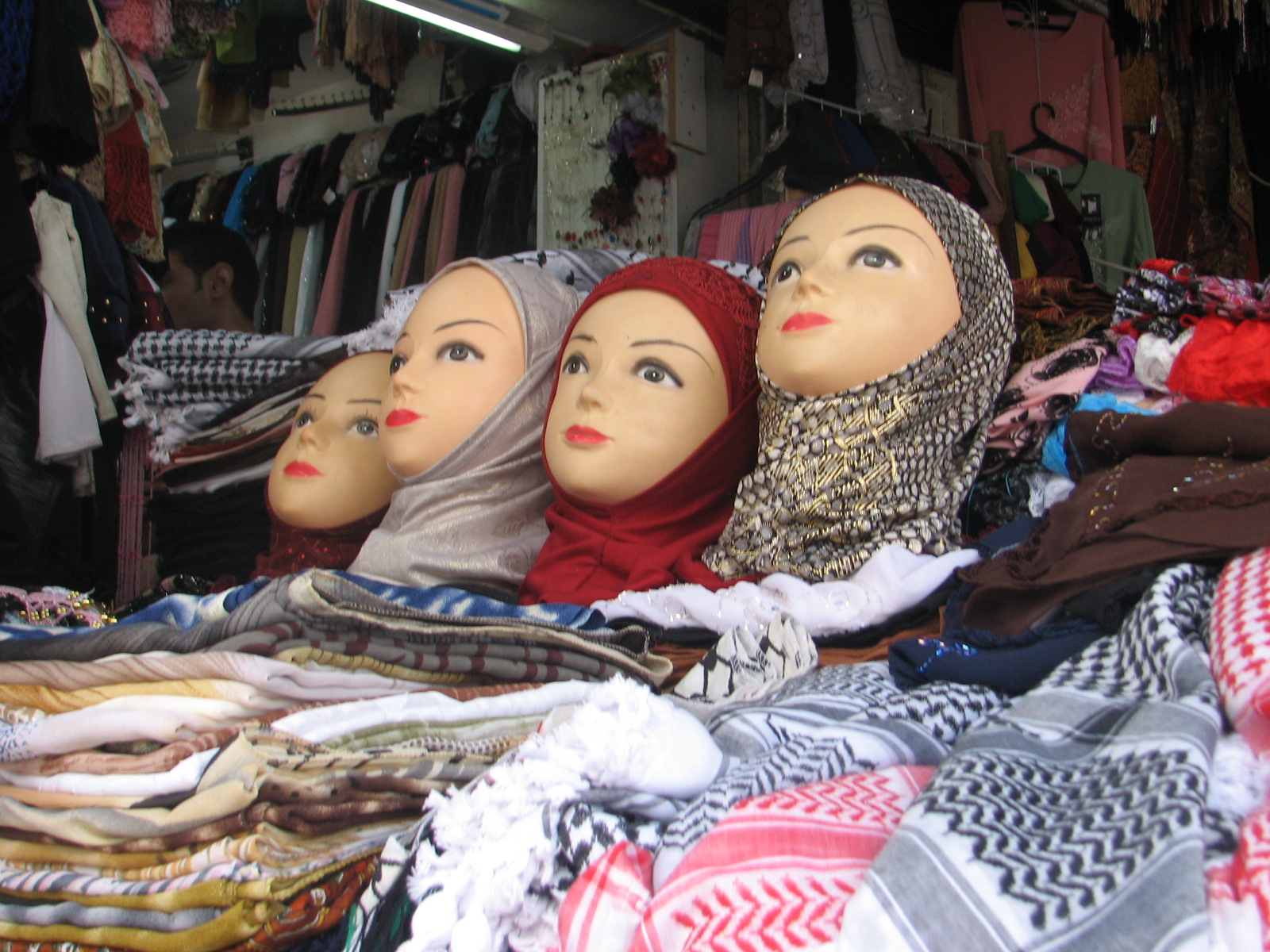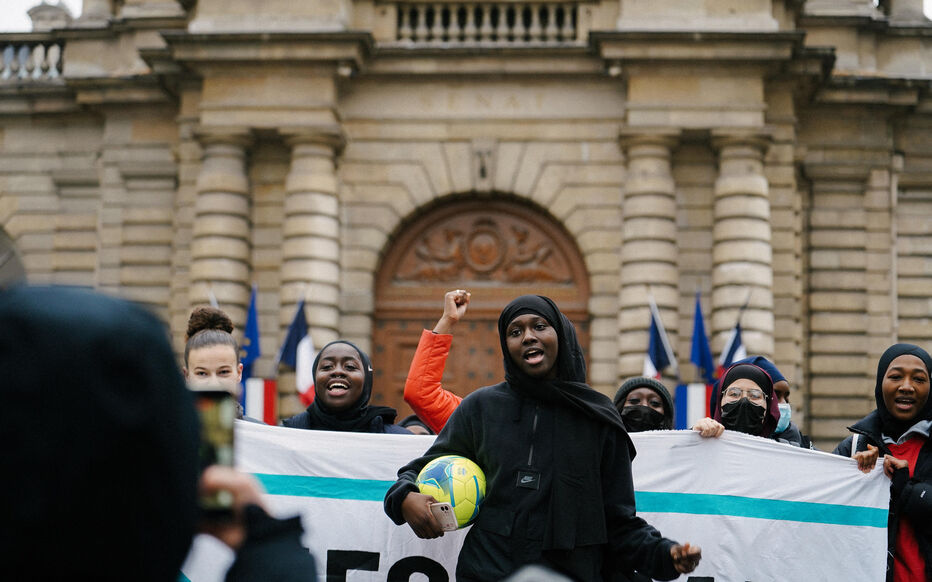The state government of North-Rhine Westphalia (NRW), the most populous of Germany’s 16 federal states, is contemplating following the Austrian lead and banning girls under the age of 14 from wearing a hijab.
The proponents of this prohibition have been vague on where it is supposed to apply. Some have spoken of a potential ban in public kindergartens and schools; others have seemed desirous to extend it to other areas of social life.1
‘Pure perversion’
The proposal was first made by Joachim Stamp, politician from the Liberal Party (FDP) and NRW’s Minister for Children, Family, Refugees and Integration. Serap Güler, CDU politician and State Secretary for Integration in Stamp’s Ministry, seconded her boss: “Putting a hijab on a young girl is pure perversion. It sexualises the child. We need to take a clear stance against this”, Güler asserted when speaking to public broadcaster WDR.2
Güler went on to substantiate her arguments: “Our point is the protection of the child’s well-being. When a seven-year-old girl suddenly goes to school with a headscarf, she surely hasn’t chosen to do so of her own accord. According to the Islamic faith, a young girl does not have to wear a headscarf until puberty.”3
Difficult legal terrain
Other politicians have expressed scepticism, however. Green Party policymaker Ekin Deligöz voiced her strong opposition to young girls wearing the hijab. Yet she observed that she “saw no juridically watertight possibility to push through such a ban” targeting young girls: “I can’t prevent parents from having their child baptised or from sending them to preparatoy lessons for the First Communion, either”, she said.4
Deligöz and others also emphasised that a hijab ban ran the risk of pushing girls out of public school institution. Then, they argued, the only possibility to educate girls about their rights and to help them lead self-determined lives would be lost.
Rights of the child vs. parental prerogatives
The nub of the matter revolves around the balancing act between the individual rights of the child and the parental right to educate their offspring as they see fit. The latter includes the prerogative to have the child brought up in and in conformity with the parents’ religious traditions as they perceive them. This parental prerogative is guaranteed both by Germany’s Basic Law and by European human rights conventions.
Murat Kayman, a former DITIB functionary who left the association after its authoritarian turn subsequent to the 2016 Turkish coup attempt, has drawn attention to this prerogative in the context of the current debate. He observes that the German Constitutional Court has stated that the upbringing of children (including in its religious aspects) should as a rule be pursued by the parents. The state only enters the picture as an exception – when parents manifestly fail to fulfil their duty of care.
According to Kayman, the proposal of the NRW Integration Ministry is now seeking to inverse this principle: In the case of Muslim children, the state is attempting to step in as a rule and to assume an educational role. The basic assumption is that
“the education of a Muslim girl in the companionship with her parents poses an inherent threat to the well-being of the child at least in those cases when it implies the wearing of a headscarf prior to the age of 14.”5
Echoes of the debate on male circumcision
In fact, the clash between a (certain vision of) children’s rights and the right of parents to provide a religious upbringing to their sons and daughters is anything but new. In 2012, a district court caused a stir by ruling that the Jewish and Muslim custom of circumcising male infants violated the children’s right to physical integrity and was therefore in contravention of German law. (The federal government swiftly issued a new legal provision explicitly recognising the legality of male religious circumcision.)
Responding to the present debate on the hijab, the conservative Frankfurter Allgemeine Zeitung observed that Muslim girls, like all other children,
“grow up in the religion of their parents without being able to make this decision themselves. Infants are baptised; they may be circumcised in Germany. Parents have their small girls’ ears pierced – apparently also a form of Weltanschauung. Yes, one has to pay close attention to what is happening to children. But it is not the state that educates children but the parents.”6
Hence, the argument that young Muslim girls are not able to decide freely on whether they want to wear the headscarf or not is undoubtedly correct – yet it is doubtful whether it really gets to the heart of the problem.
Dubious focus on equality
The supporters of the hijab ban for girls cast their proposal in terms of non-discrimination and equality of the sexes. Yet their unique focus on the Muslim headscarf is difficult to reconcile with this very emphasis on equality. After all, children wearing necklaces bearing the Christian cross or covering their head with a Jewish kippah are not a matter for state concern. Serap Güler put it in the following way:
“When a child wears a necklace with a cross, they can take it off later on in life without having to justify themselves a great deal for it, and without experiencing dramatic changes in their lives. With many girls of Muslim faith, this can’t be done so easily with a headscarf. The social milieu often creates such a strong pressure that it is impossible to decide against the headscarf later on without great tensions. Some prents also want their child to wear a headscarf as early as possible so that she doesn’t question this step later on.”7
The experiences of the NRW state with such differential treatment of religious groups have not been successful in the past, however. In 2015 landmark case, Germany’s Constitutional Court overturned parts of NRW’s school regulations, which had de facto banned teachers from wearing the hijab while privileging the display of Christian and ‘occidental’ (abendländische) symbols and values.
Defending ‘German’ identity
For Murat Kayman, the renewed discussions on a hijab ban must be placed in a wider political context, in which a German and Judeo-Christian identity is increasingly constructed against the foil of an Islamic other:
“We cannot understand this debate as one that is playing out in a discursive vacuum. Of course the present demand with respect to Muslim girls is sustained by the notion that the headscarf must categorically – including in the case of adult women – be ostracised as a symbol of oppression and be banned from the public sphere. […] The state only uses the concern for the well-being of Muslim girls as a pretext to manifest a fundamental value judgement on a visible detail of Muslim life.”8
This stance was echoed by several representatives from Germany’s larger Muslim associations.9
‘Pathological fixation on the headscarf’
Kayman went on to criticise that populist measures such as a hijab ban for young girls were not conducive to fostering a climate of open debate and critical self-reflection within Muslim communities. Hence, hard questions – for instance on bigoted moral expectations directed at girls and women – would go unasked, as Muslims are pushed back into the role of victimised objects of hostile state regulation.10
In this observation, he was seconded by Bülent Ucar, director of the Faculty of Islamic Theology at the University of Osnabrück. After years of heated hijab debates, Ucar observed, “we are faced with a pathological fixation on the headscarf from all sides – also from some [Muslim] parents.”
However, Ucar added, “the state needs to tolerate it when a child comes to school with a kippah, a cross, or a headscarf. If something is to change, it is the parents who need to budge.”11
Muslim supporters of a ban
Yet Ucar’s colleague from the Osnabrück faculty, Mouhanad Khorchide, expressed his support for the proposed hijab ban for young girls. He criticised Muslim organisations and their spokespeople for “hiding behind their victim status” and for refusing to engage with existing problems within Muslim families and communities.12
In particular, the theologian described how he had been repeatedly solicited by Muslim women whose fathers or husbands were forcing their young female family members to wear a hijab – a fact causing great distress to the girls. One woman expressed her support for prohibiting girls from wearing the hijab to Khorchide. According to her,
“[o]ne underestimates how partriarchal men determine what we women may wear and what not. In some families – like mine – these are firmly anchored structures that we women cannot simply break free from. But a legal framework helps us to an incredible extent because now we’re no longer the bad ones who want to rebell: We simply abide by the laws of the land.”13
Ambivalent feedback from teachers
The feedback from educators and teachers to the new proposal has been ambivalent. On the one hand, the President of the German Teacher’s Union called for a law to prohibit “conscious demonstration of religious signs by children” below a certain age. Other teachers denied the need for such a ban, however.
Christina Mika, chairwoman of the association of NRW’s primary schools, asserted that none of the schools in the state had ever signalled that hijab-wearing girls constituted a issue. At her own school in an immigrant-dominated neighbourhood of Dortmund, 280 out of 340 pupils were Muslim, yet only 5 girls wore a hijab.
Where teachers suspected undue pressure being exercised on a child, individual dialogue with the girl’s parents had often proven successful. Instead of banning the hijab through legal means, schools should be given more resources to engage parents and to sensitise students for religious issues, or so Mika demanded.14
Sources
https://www.tagesspiegel.de/politik/integration-und-religion-fdp-chef-lindner-unterstuetzt-kopftuchverbot-fuer-maedchen-unter-14/21151026.html ↩
https://dtj-online.de/staatssekretaerin-gueler-uns-geht-es-allein-um-das-kindeswohl-101458 ↩
https://www.tagesspiegel.de/politik/integration-und-religion-fdp-chef-lindner-unterstuetzt-kopftuchverbot-fuer-maedchen-unter-14/21151026.html ↩
http://murat-kayman.de/2018/04/11/das-unendliche-kopftuch/ ↩
http://einspruch.faz.net/recht-des-tages/2018-04-10/d79bacd1558f89ff3cb112dfc659a679/?GEPC=s3 ↩
https://dtj-online.de/staatssekretaerin-gueler-uns-geht-es-allein-um-das-kindeswohl-101458 ↩
http://murat-kayman.de/2018/04/11/das-unendliche-kopftuch/ ↩
http://www.islamiq.de/2018/04/12/schulexperten-lehnen-kopftuchverbot-fuer-maedchen-ab/ ↩
http://murat-kayman.de/2018/04/11/das-unendliche-kopftuch/ ↩
https://www.welt.de/politik/deutschland/article175333784/Islamforscher-Buelent-Ucar-Kopftuch-fuer-kleine-Maedchen-hat-keine-religioese-Basis.html?utm_campaign=untersttzen-sie-ein-kopftuchverbot-fr-ju&utm_customer=welt&utm_medium=twitter&utm_source=opinaryy ↩
https://derstandard.at/2000077553445/Kopftuchdebatte-Und-was-sagen-die-betroffenen-Kinder-dazu ↩
https://derstandard.at/2000077553445/Kopftuchdebatte-Und-was-sagen-die-betroffenen-Kinder-dazu ↩
http://www.sueddeutsche.de/politik/religioese-erziehung-warum-ein-kopftuchverbot-fuer-kinder-unrealistisch-ist-1.3939536 ↩






